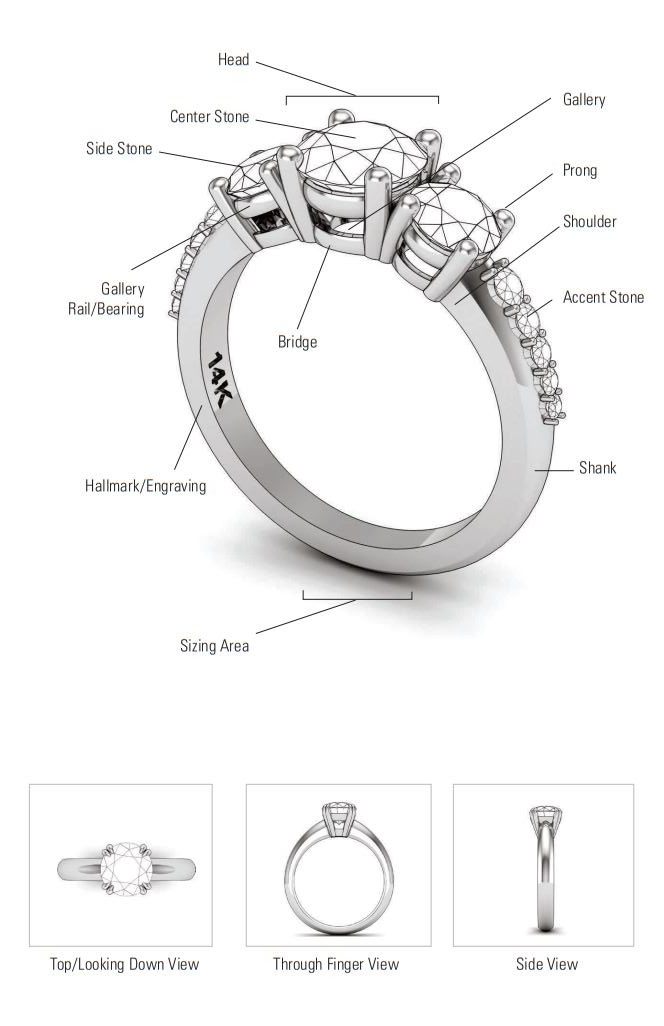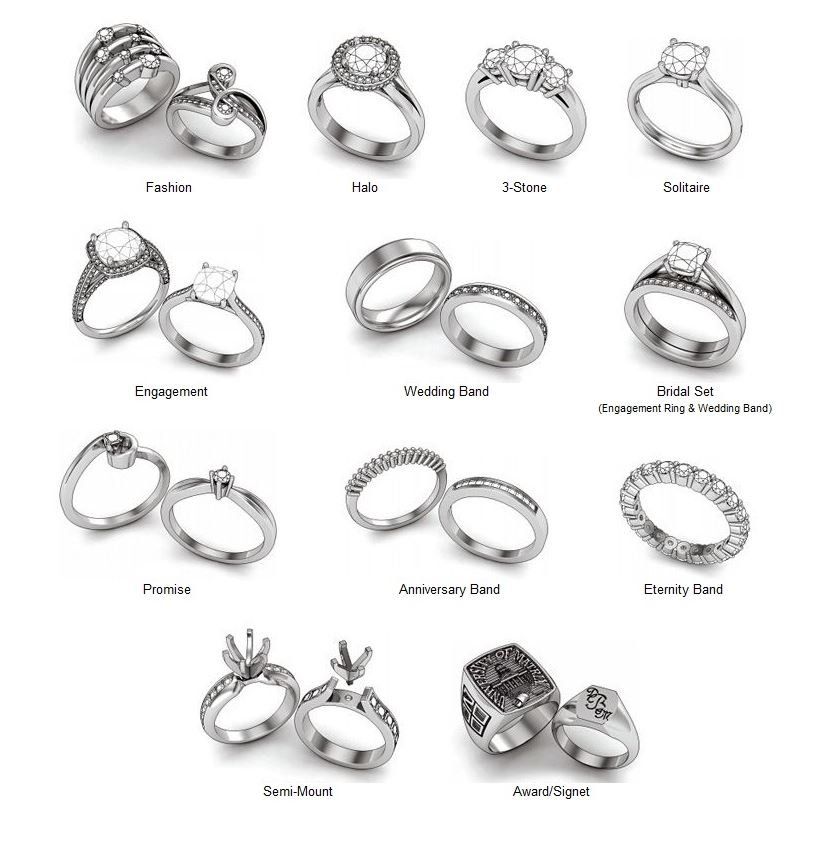Ring Terminology

RING TERMINOLOGY
Mounting - The whole ring itself, not including any gemstones.
Shank - The band portion of the ring wraps around underneath your finger.
Center Stone - The main stone of the ring, often the largest gemstone of the piece.
Side Stone/Accent Stone - A gemstone directly adjacent to the center stone, often smaller in size (sometimes "side stone" term is used as well as the "accent stone" term).
Head - The piece of metal that holds a gemstone, but is also connected to the band of the ring, also referred too as a Setting. Included in the head are the prongs or bezel, the gallery, and the gallery rail.
Prong - The bit of metal on the head that grabs the stone and holds it in place; prongs come in different styles and amounts depending on the ring.
Gallery - The part of the head underneath the center stone, visible when the ring is in profile; it may be plain or have filigree, engraving or accents stones. (not all rings have a gallery)
Gallery Rail - Cross beam of metal that keeps the prongs on the sides of the stone in place. (not all rings have a gallery rail)
Bridge - The underside of the band that is directly beneath the head (not all rings have a bridge)
Shoulder - The top part of the band on either side of the head (just like the shoulders of a person).
Sizing Area (Base) - The base of the shank where ring sizing will occur; this is important to consider when having patterned, eternity, or tapered bands resized.
Hallmark - The mark that is punched or engraved into every ring showing what karat the metal is.
Shown above is a diagram of a "classic" engagement ring.
There are many components to consider when buying or creating a ring. Choosing a ring style depends on personal preference. Most rings feature a Center Stone held by a setting often referred to as the Head. The center stone can be accompanied by Side Stones, these are stones that are set right next to the center stone, whilst the Accent Stones are either set on the Shoulder and Shank of the ring(as shown in this diagram, the term Side Stone and Accent Stones are interchangeable).
In the image shown, all the stones are held into the setting with pieces of metal called Prongs. There are various types of prongs and other setting styles that are also used to hold stones, such as V-Prongs or Bezel Settings. Below the center stone is the Gallery, Gallery Rail and the Bridge, all are visible when the ring is in profile; they may be plain or have filigree, engraving or accents stones. They can also be left open as shown in this diagram. On the inside of the ring, you have the Hallmark, which can be a karat mark or the actual name or logo of the person or company that made the ring. It is popular to engrave a note on the inside of the ring band as well, if you plan on this make sure you do not plan on sizing the ring, as the engraving would usually be done where the Sizing Area is at the bottom of the ring shank and if sized down or up would ruin the engraving and would have to be polished down and redone. The ring in this diagram would be considered a 3 stone prong set ring with a graduated accent stones and a half round shank.
*Alternate ring designs shown below*

